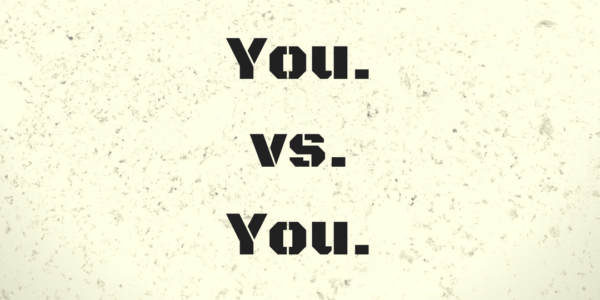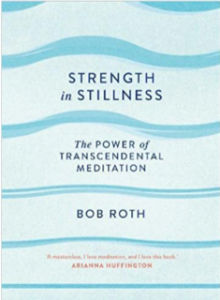Today’s guest post comes from Kyle Herrick. He has written here before, so if you like this article, be sure to check out his previous one here.
—
With all the distractions that living in the 21st century allows us, it’s rare to spend time alone with our thoughts. That is, unless you’re an athlete in the heat of competition. You step up to the plate or toe the rubber, and suddenly it’s just you and your lesser-self facing off against an opponent whose sole purpose is to beat you. If you haven’t conquered your lesser-self, you immediately are at a disadvantage as it becomes a game of 2 on 1.
To paraphrase, the lesser-self is a term in philosophy that refers to the part of you that keeps you from being all you can. It lives inside you and it’s a part of everyone.
I believe it’s important to conquer your lesser-self in every aspect of life. It’s a constant battle that we must take on everyday as “it” (you) is a hell of an opponent and refuses to go down without a fight.
My Battle
I spent years underperforming on the baseball field. Not because of a lack of skill, training, or preparation, but simply because my mind kept me from consistently playing at my best.
Prior to my senior year of college, I decided to finally take on this opponent. I began learning about and practicing different forms of meditation.
In the beginning I would aim to sit for 5 minutes twice a day and attempt to push out all thoughts while only focusing on my breath. I saw a significant change in my ability to identify the thoughts coming into my head but didn’t feel that my mind was becoming more “clear”. This, along with the boredom and constant failure of this method, had me searching for other options.
That’s when I came across Bob Roth and his book, Strength in Stillness, which lays out the basis of transcendental meditation.
Now before I get into the details of transcendental meditation and how to practice it, I want to quickly lay out the benefits that both the author claims, and I have experienced; as well as what it is about this mental exercise that gives these benefits.
Benefits
- More energy
- More focus
- Becomes easier to slip into “The Zone”
- More calmness
- Along with a slew of health benefits
Think of A Car
A great analogy to help understand the benefits of TM is that of a car. If a car’s RPM while idling is elevated, the car is going to run out of fuel more quickly. Learning to lower the RPMs while idling will leave more in the tank for when you need to put the pedal to the floor.
Transcendental meditation lowers your mind and body’s RPMs and allows you to save more energy for the tasks that require it.
Get Outside of Yourself
So how did this help me learn to conquer my lesser-self? As I mentioned before, one of the benefits is slipping into the zone more easily and frequently. Your lesser-self doesn’t exist in the zone.
Also, once you become adept at TM you can implement it throughout your day or competition. Something I’ve noticed is that taking a second to focus on my breath helps me get out of my own head and be more in the moment. And since your lesser-self tends to express itself through that little voice in your head, it’s another way to defeat it.
Lastly, recognizing that this is a daily battle you must take on is the most important step to becoming the most you can.
(Those at higherprimate.com are on the same page)
How To
An important note about transcendental meditation is that it is expected that you learn under the tutelage of a teacher. Because of this and their attempt to monetize their knowledge I had to do additional research outside of the book to develop the practice that I use and will share with you.
- Transcendental meditation is centered around the use of a mantra which is repeated with every breath. The mantra is supposed to be a sound that has no meaning. The mantra I found was “Ainga”.
- Next, it’s important to note how you breathe. The key is to think of breathing with your belly. Pushing your belly button out as you inhale and in as you exhale. This further opens the bottom of the diaphragm and allows the lungs to expand and take in more oxygen.
- Your mantra should flow with your breath. For example, “Ain” on the inhale and “ga” on the exhale.
- The key is to keep your focus on your mantra. This is what makes transcendental meditation different from other forms, the focus on repeating your mantra keeps other thoughts from entering your mind. And when they do enter, which they eventually will because it’s impossible to completely clear your mind for extended periods of time, you forgive yourself and continue on with your meditation.
- You can do this while sitting up (important to have good posture and not slouch) or while laying down flat.
- The goal should be to do this 2x a day for 15-20 minutes each time. This may seem like a lot, but trust me, it’s worth the time commitment and after some time your mind will be looking forward to the next time it can relax and recharge with meditation.
- Expect each session to be slightly different. To paraphrase what Roth says, it doesn’t matter if you become fully submerged, all that matter is that you got wet.
I encourage you to take a dip into transcendental meditation. I also encourage you to read or listen to Roth’s audio book for more information on TM and its benefits/practices.
I hope I’ve done an adequate job informing you on TM. If you have any questions I’d love to answer them. I can be reached through:
Email: Kyledacbaseball@gmail.com
Twitter: @kyleherrick3
No Let Up,
Kyle


